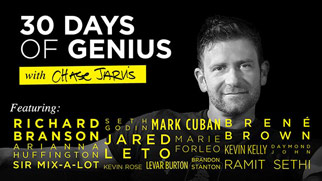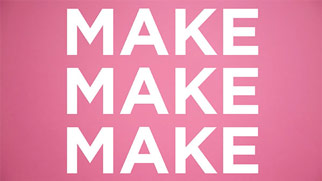For some, the idea of being a perfectionist is desirable. “I’m so disciplined that it’s a problem,” says the person who wants you to respect their hard-working attitude. But for Thomas Curran, a man that has taught psychology at the London School of Economics for years, it’s a trap.
We recently sat down to discuss his book of a similar title, the arguments it makes about how perfectionism can hold us back, and what we can do about it.
Listen to the Podcast
Understanding Perfectionism
So, what causes perfectionism? We know on the surface level that it’s about wanting to do the best job possible. That can be a good thing in moderation. Where things get unhealthy is when perfectionism starts to become obsessive and all-consuming.
Perfectionists can be highly driven by fear—fear of failure, fear of being judged by others, or even just a general sense of anxiousness that can lead them to strive for excellence in everything they do. They may also feel pressured by their own expectations, or those of parents, teachers, or peers.
Although perfectionism is often driven by external pressures, it can also be a result of internal struggles with self-confidence and self-esteem. Perfectionists may be overly critical of themselves, feeling like they can never measure up to what others expect of them or to their own expectations.
“Perfectionistic people believe at the root that they’re not good enough, that they’re not perfect enough, and that in some way they are flawed, defective, inadequate, and they learn that belief from an early age,” Thomas tells me. “It carries through them into later life, and I think we have to be really aware that perfectionism can have some really negative outcomes psychologically.”
Many of us have experienced these outcomes first-hand.
Inside the Perfectionistic Mind
A perfectionist’s mindset is ‘do or die’. Success is the only option, and anything short of it is an absolute failure. Many find that the best way they can encourage themselves is by having high standards at all times. These standards, however, can be very difficult to reach and when we’re unable to meet them it can lead us into a spiral of depression and anxiety.
Sometimes people with perfectionist tendencies will find themselves overcompensating in order to make up for that initial sense of failure. This can involve working harder, pushing themselves beyond their limits, and consequently setting even higher standards than before. The problem with this is that, eventually, the goals become so high they’re impossible to reach – perpetuating the cycle of feeling worthless and inadequate.
These aren’t meaningless feelings. Chronic perfectionism acan lead to many mental health issues like depression, eating disorders, anxiety, and stress. It’s a particularly concerning issue if it begins to interfere with our day-to-day functioning – impacting studies, work, or relationships.
The Paradox of Perfectionism and Productivity
Productivity and perfectionism strive to achieve the same goal but are nowhere near one and the same. In fact, they can actually be counterproductive to each other if left unbalanced.
“When you look at the data, there’s no link between the two? Perfectionism and performance don’t correlate with each other, and that’s really perplexing.”
When perfectionism becomes too extreme, it can take away from productivity. People who struggle with perfectionism may become so overwhelmed by their need to achieve that they end up avoiding activities or tasks altogether. This can lead to procrastination, distractedness, and self-sabotage which are all detrimental to productivity, Thomas says.
Creatives find themselves particularly vulnerable to the burden of perfectionism. There are of course cases where it can pay off – some of the world’s greatest art wouldn’t exist if it wasn’t for the unwavering commitment of artists to ‘get it right’. But more often than not, perfectionism actually gets in the way.
Overcoming Perfectionism and Embracing Good Enough
Overcoming perfectionism starts with embracing the statement that no over-achiever ever wants to hear – ‘Good enough’.
That simple phrase represents the idea that, sometimes, it’s okay to be content with something. We don’t have to push ourselves beyond our limits all of the time; sometimes we can acknowledge when we’ve done enough and move on.
Contrary to what a perfectionist might assume, doing ‘good enough’ doesn’t have to mean settling or being mediocre. It doesn’t mean being lazy either. The concept is simply about putting more important goals first.
Of course, it doesn’t help that the culture we live in today is so focused on achieving perfection. Perfectly curated Instagram feeds and perfect performances are praised and rewarded, making it difficult to step away from the need to constantly improve.
Thomas’ advice? It’s all about finding balance. Aspiring toward excellence while still allowing yourself to make mistakes is key. Stress management, as well as approaching creative projects with a healthy dose of realism can actually help you be more productive, and may even lead to better results in the end. What people today need is a mindset shift; where being content with something is seen as an achievement in itself.
Chatting with Thomas Curran has been eye-opening. His advice about pursuing ;good enough; in creative projects is something that can be applied to many aspects of life. I highly recommend giving ‘The Perfection Trap‘ a read the next time you find yourself stuck in the cycle of perfectionism. As it has been for so many, these insights might be just what you need to help kickstart your creative journey and take that first step toward achieving a healthy balance.
Enjoy!
FOLLOW THOMAS:
twitter | linkedin | website



























